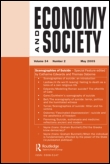The governmentalization of living: calculating global health
 The contemporary global health agenda has shifted emphasis from mapping disease patterns to calculating disease burden in efforts to gauge ‘the state of world health’. In this paper, we account for this shift by showing how a novel epidemiological style of thought emerged in the closing decades of the twentieth century. As is well known, the compilation and tabulation of vital statistics – death-rates, birth-rates, morbidity rates – contributed to the birth of the ‘population’ in the eighteenth and nineteenth centuries. The population is reformatted from the middle of the twentieth century by ‘modified life tables’ made up of disability weightings, health state valuations, quality of life scores, disease burden estimates, etc. The problem of morbid death gives way to that of morbid living, made calculable through a metrics of ‘severity’, ‘disability’ and ‘impairment’. A series of new indices and scales (e.g. the QALY and DALY) has contributed to a governmentalization of living, in the course of which the social and personal consequences of living with disease come to be an object of political concern, and made knowable, calculable and thereby amenable to various strategies of intervention. We conclude by showing how this style of epidemiological thought has generated a new global visibility for brain disorders as their impact on individuals, health care systems and nations are calculated in novel ways.
The contemporary global health agenda has shifted emphasis from mapping disease patterns to calculating disease burden in efforts to gauge ‘the state of world health’. In this paper, we account for this shift by showing how a novel epidemiological style of thought emerged in the closing decades of the twentieth century. As is well known, the compilation and tabulation of vital statistics – death-rates, birth-rates, morbidity rates – contributed to the birth of the ‘population’ in the eighteenth and nineteenth centuries. The population is reformatted from the middle of the twentieth century by ‘modified life tables’ made up of disability weightings, health state valuations, quality of life scores, disease burden estimates, etc. The problem of morbid death gives way to that of morbid living, made calculable through a metrics of ‘severity’, ‘disability’ and ‘impairment’. A series of new indices and scales (e.g. the QALY and DALY) has contributed to a governmentalization of living, in the course of which the social and personal consequences of living with disease come to be an object of political concern, and made knowable, calculable and thereby amenable to various strategies of intervention. We conclude by showing how this style of epidemiological thought has generated a new global visibility for brain disorders as their impact on individuals, health care systems and nations are calculated in novel ways.
Ayo Wahlberg & Nikolas Rose: The governmentalization of living: calculating global health; Economy and Society; Vol 44; Issue 1; 2015
